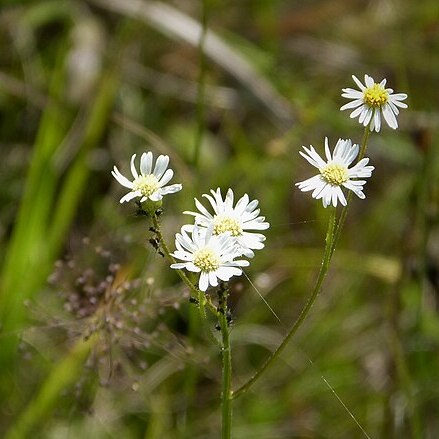Mostly 5–15 dm; lvs mostly linear or nearly so, the larger ones mostly 3–11 cm and to 0.5 or 1(–2) cm wide, but the lower lvs commonly deciduous, so that the lvs in well grown flowering plants are rarely more than 0.5(–1) cm wide; infl diffusely branched, merely subulate-bracteate, the bracts commonly less than 1 cm; invol bracts narrow, acute or acuminate, evidently imbricate; rays white or lilac, mostly 5–8 mm; disk mostly 3–6 mm wide; achenes evidently wing-margined; pappus-awns less than 1 mm, or sometimes obsolete; 2n=18, 36. Moist or wet to sometimes rather dry places; se. U.S., n. to N.C., Ky., s. Ill., and Mo., and w. to Okla. and e. Tex. July–Oct.

